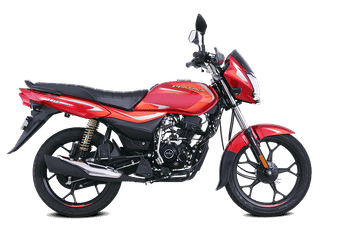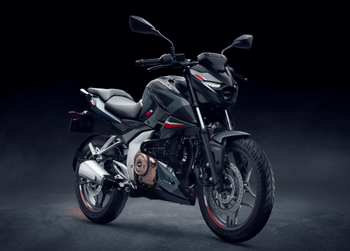Bajaj Pulsar 125 Neon review, test ride
Does the Pulsar continue to stay true to its "Fastest Indian" slogan in a 125cc iteration? Read on to find out.
Published on Sep 06, 2019 06:00:00 AM
81,773 Views
Follow us on


Back in 2001, Bajaj launched two motorcycles that kicked off what went on to become one of the most iconic monikers in Indian motorcycling, stitching together impressive performance and an affordable price tag. The Pulsar was a unique product at the time and some brilliant marketing, in the form of aspirational advertisements and events like the Pulsar Stunt Mania, helped cement the bike as one of the most enviable entry level sports bikes in the country. Over its near two-decade-long existence, the Pulsar brand has seen multiple bikes occupy different segments, but the one thing that remained constant was the fact that it was synonymous with sporty performance. Now, 18 years after the first Pulsar, the latest addition to the family happens to be the smallest and least powerful one yet. So, the question is – in its 125cc iteration, does it still hold true to the brand that once carried the slogan of being "The Fastest Indian"?

In its entirety, the new Pulsar 125 Neon remains unchanged and unbothered by the passage of time – it looks almost exactly like it did years ago, with the only major differences being the neon detailing and lack of a belly pan or tank shrouds. But those differences aren't new either, as we saw those changes on the Pulsar 150 Neon. That's not all it shares with its larger capacity sibling – everything, from the frame and suspension to the brakes, has been carried over. And since it borrows most of its components from its elder sibling, the end product is a bike that looks and behaves like one from a segment above – it's larger and significantly beefier than similar capacity bikes like the CB Shine or the Super Splendour. It also gets the same switchgear and semi-digital instrument console from the 150s, both of which are dated but still impressive in the segment.
The engine, too, is the same as the one used on the 150s, but Bajaj reduced its cubic capacity to a tad under 125 by shortening the stroke – down to 50.5mm from 60.7mm. The bore on the other hand is identical at 56.0mm. Out in the real world, this was an engine that behaved very much like that of a Pulsar 150, except with slightly lower top-end performance. Power delivery is linear, and the engine is largely unstressed even at higher rpms – something bikes in this segment usually suffer from. I managed to see 107kph on the speedo, but the engine did have a little more in it, but only enough to get it to around the 110kph mark. The sub-125cc motor also means that this Pulsar doesn't require an ABS system by law, helping the manufacturer keep costs in check.

Bajaj made it very clear during the ride briefing that this isn't a commuter, but a bike that stays true to the Pulsar experience in the commuter segment. They even had the baby Pulsar's ARAI certified fuel-efficiency figures compared to the rest of the segment, despite it being the lowest of the lot, at 57.5kpl. Nevertheless, the 125 will do a splendid job at being an everyday commuter – the suspension offers a plush ride and both, rider and pillion seats are comfortable. At 140kg, the 125 is a good 15kg heavier than its nearest 125cc competitor, but this doesn't compromise the handling or low-speed manoeuvrability of the bike. Yes, it may not feel as easy as some of the lighter bikes in its class, but it's still a very easy motorcycle to ride.
We were given the front disc-equipped variant to ride and the brakes are noticeably better than those on most other models in the segment. The bike is also available in a drum brake variant but considering the performance drum brakes offer and how Bajaj has stressed on this being a sporty motorcycle, we're surprised the company made the decision to offer this option at all. Our test bike also came equipped with Eurogrip tyres, and I found they weren't the best for the job – they don't inspire much confidence in the corners. However, the 125 can also be had from the dealership with the MRF Nylogrips, and from previous experience, they should provide much better performance.

In my opinion, the Pulsar 125 does accomplish what it set out to do. Barring the KTM 125 Duke that costs nearly twice as much, it is the most powerful bike in the 125cc segment, and perhaps even the sportiest. And yet, Bajaj has delivered again with a competitive price that is more or less on par with rivals like the Honda CB Shine SP or the Hero Glamour. The drum brake variant costs Rs 64,000 and for a little more money, you can get yourself our pick of the two – the disc brake variant at Rs 66,618.
You could also argue that for just a little over Rs 6,000 more you could get the larger capacity, more powerful Pulsar 150 Neon (Rs 71,200). However, the 125cc segment is a price-sensitive one, and the difference is considerable at the price point. Bajaj has also told us that while all Pulsars are being readied for the switch to BS6, the company is working towards pushing the Pulsar 125 past the norms while still using a carburettor, taking the significant prices of a fuel-injection system out of the equation. If the manufacturer manages to do so, the difference between the 125 and 150 will be much more significant after the switch to BS6.
At the end of the day, the Pulsar 125 makes sense for someone looking for a bike in the commuter segment but one that is less mundane and offers an experience that stays true to the Pulsar lineage, albeit in a more docile and affordable manner.
Tech Specs 
Copyright (c) Autocar India. All rights reserved.

























 Wheels and Tyres
Wheels and Tyres Dimensions & Chassis
Dimensions & Chassis Price
Price Engine
Engine Transmission
Transmission Suspension
Suspension Brakes
Brakes
Comments
Member Login
Personal Details
No comments yet. Be the first to comment.